Discover the Colossi of Memnon: Two Giant Statues of Amenhotep III
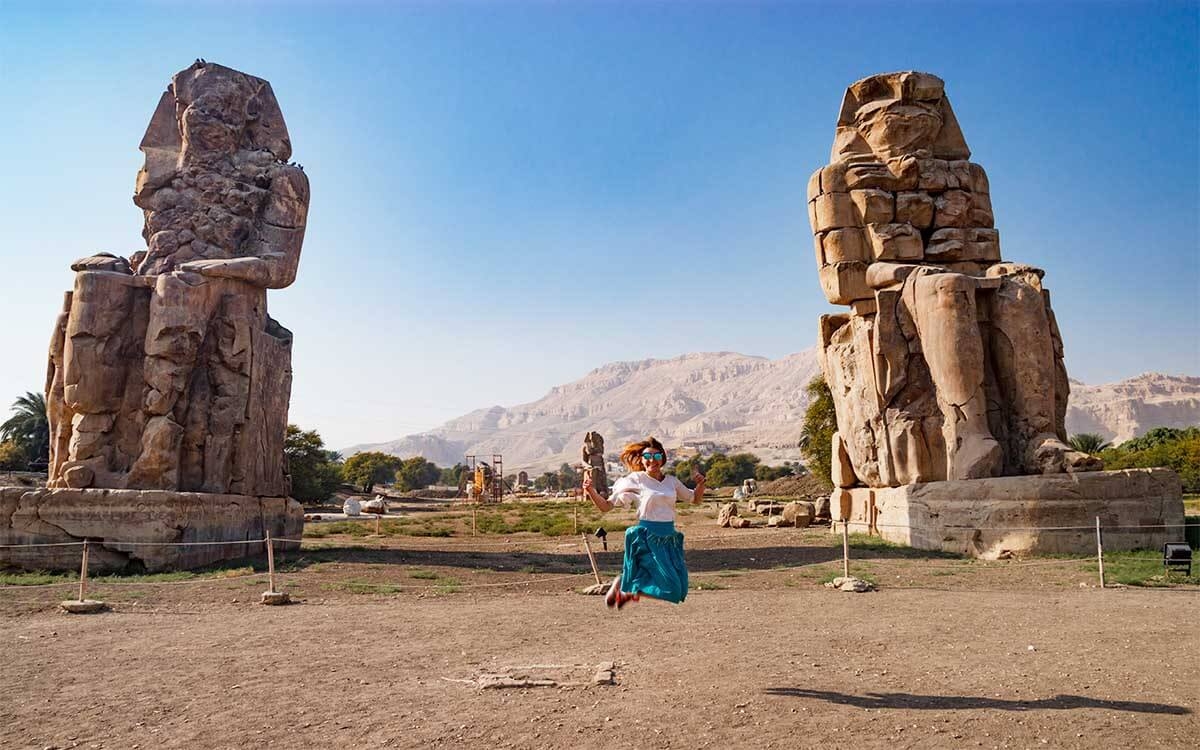
I. Brief overview of the Colossi of Memnon and their historical significance
The Colossi of Memnon are two massive stone statues of the Egyptian pharaoh Amenhotep III in the Theban necropolis in Luxor, Egypt. These iconic statues have captivated travellers and historians for centuries, offering a glimpse into the grandeur of ancient Egyptian civilization. Standing at about 18 meters (60 feet), the Colossi of Memnon are a remarkable testament to the skill and artistry of the ancient Egyptians.
The Colossi of Memnon was built around 1350 BC during the reign of Pharaoh Amenhotep III, who was known for his opulent building projects. Originally, these statues stood at Amenhotep III's mortuary temple entrance, a massive complex dedicated to his afterlife.
Each statue depicts the pharaoh seated on a throne, wearing a royal headdress and a ceremonial beard. Originally, the statues were adorned with vibrant colours and intricate details, but most of this decoration has faded.
The Colossi of Memnon were damaged by earthquakes and inundation over the centuries, and today, they stand as solitary figures in the desert landscape. Although they are no longer complete, these statues are an awe-inspiring sight and a popular tourist attraction.
The historical significance of the Colossi of Memnon lies in their connection to the reign of Amenhotep III, a pharaoh known for his prosperity and cultural achievements. These statues represented the pharaoh's divine and earthly power, standing as guardians of his mortuary temple.
Visiting the Colossi of Memnon allows you to step back in time and marvel at ancient Egypt's artistic and architectural achievements.
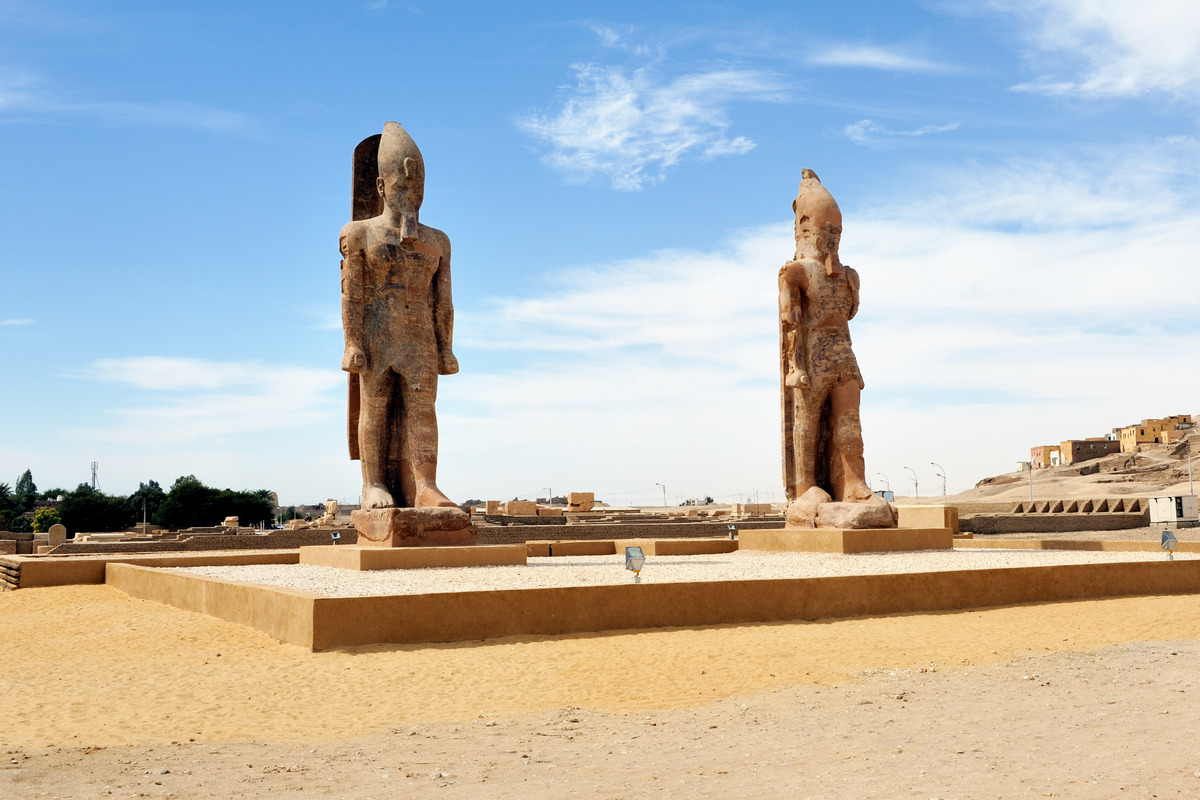
II. Amenhotep III: The Pharaoh Behind the Statues
Insight into the reign of Amenhotep III and his architectural achievements
Amenhotep III was one of the most powerful and influential pharaohs of ancient Egypt, and it was during his reign that the Colossi of Memnon were built. He ruled from 1391 to 1353 BC and was known for his grand architectural projects and artistic achievements. Here are some fascinating insights into the reign of Amenhotep III:
-
Building Projects: Amenhotep III was a prolific builder, constructing numerous temples and palaces throughout Egypt. His most famous creations are the mortuary temple complex known as the Colossi of Memnon.
-
The Colossi of Memnon: The Colossi of Memnon are two colossal statues of Amenhotep III seated on thrones. Each statue is approximately 18 meters tall and weighs hundreds of tons. They were originally part of a larger mortuary temple complex dedicated to the pharaoh.
-
Luxor Temple: Another remarkable architectural achievement of Amenhotep III is the Luxor Temple. He expanded and renovated the temple, adding new obelisks and statues. The temple is now a UNESCO World Heritage site, attracting millions of visitors annually.
-
Artistic Patronage: Amenhotep III was a great patron of the arts and supported many artists and craftsmen. During his reign, artistic production flourished, with beautiful statues, reliefs, and decorative objects being created.
-
Political Power: Amenhotep III's reign was characterized by stability and prosperity. Egypt enjoyed peace and economic growth, and the pharaoh maintained diplomatic relations with other powerful empires, such as the Hittites.
The Colossi of Memnon are a lasting testament to the grandeur and power of Amenhotep III's reign. They continue to awe and inspire visitors with their imposing presence and captivating history. To learn more about Amenhotep III and his architectural achievements, visit the Wikipedia page about him.

III. The Construction of the Colossi
The Colossi of Memnon are impressive in their size and the craftsmanship and engineering behind their construction. Here are some details about the materials, techniques, and manpower used to create these magnificent statues:
Materials: The statues were carved out of quartzite sandstone, a popular material for creating monumental sculptures in ancient Egypt. The sandstone is known for its durability and ability to withstand the test of time.
Techniques: The craftsmen who created the Colossi of Memnon used traditional carving techniques and advanced engineering methods. They carefully chiselled away at the stone, shaping it into the desired form and adding intricate details to the statues.
Manpower: It is estimated that thousands of workers were involved in the construction of the Colossi. The labour force consisted of skilled craftsmen, sculptors, and engineers who worked tirelessly to bring these colossal statues to life.
The Colossi of Memnon truly stand as a testament to the skill and ingenuity of the ancient Egyptians. They have captivated people's imaginations for centuries and continue to be a popular attraction for visitors worldwide.
To learn more about the construction and history of the Colossi of Memnon, you can visit the Colossi of Memnon Wikipedia page.

IV. The Colossal Size and Features
Description of the physical attributes and dimensions of the Colossi
The Colossi of Memnon are two enormous statues that once stood at the entrance of the Mortuary Temple of Amenhotep III, located on the west bank of the Nile River in Egypt. These imposing statues depict Amenhotep III seated on his throne, amongst the largest ancient Egyptian statues ever created. Here's a description of their physical attributes and dimensions:
1. Size: Each Colossus stands at an impressive height of approximately 18 meters (60 feet), making them a remarkable sight. The statues were carved out of single blocks of quartzite sandstone and were originally even larger before suffering damage over the centuries.
2. Features: The Colossi of Memnon showcase intricate details and exquisite craftsmanship. Amenhotep III is depicted in a seated position, with a regal and serene expression on his face. He is shown wearing the royal kilt and the Nemes headdress, a striped headcloth by Egyptian pharaohs.
3. Restoration and Preservation: Over the years, the Colossi of Memnon have faced significant damage due to natural factors, including earthquakes and floods. In ancient times, the statues were adorned with paint and decorative elements, but most have been lost over time. Efforts have been made to preserve and restore the statues, ensuring that future generations can continue to appreciate their grandeur.
These colossal statues are not only a testament to the incredible skill of ancient Egyptian craftsmen but also serve as a reminder of the power and grandeur of Amenhotep III during his reign. They attract visitors from around the world who are fascinated by ancient Egypt's rich history and artistry. To learn more about the Colossi of Memnon, you can visit their Wikipedia page.
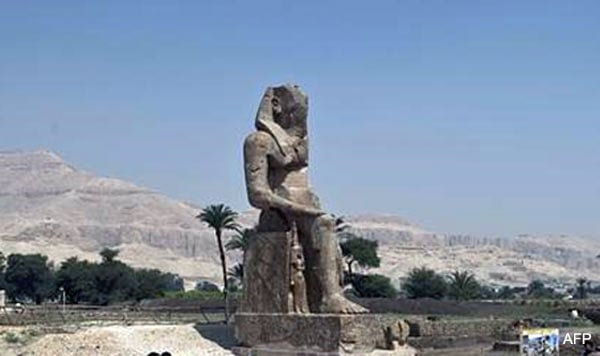
V. The Purpose and Symbolism
Exploration of the religious and symbolic meaning behind the statues
The Colossi of Memnon, two massive statues of Amenhotep III, hold great religious and symbolic significance in ancient Egyptian history. Here's a closer look at their purpose and symbolism:
-
Divine Representation: The statues were believed to represent the pharaoh Amenhotep III, a divine ruler. The colossal size of the statues was meant to emphasize the pharaoh's power and grandeur, showcasing his connection to the gods.
-
Guardians of the Necropolis: The statues were originally placed at the entrance of Amenhotep III's mortuary temple on the west bank of the Nile, guarding the entrance to the royal tomb. They were meant to protect the pharaoh's final resting place and ensure his safe passage to the afterlife.
-
The symbolism of Stability: The statues were strategically positioned to face east, symbolizing the pharaoh's eternal presence and role in maintaining cosmic order. They were believed to ensure stability and prosperity for the kingdom.
-
Connection to the Sun God: The northern statue was renowned for producing a haunting sound at dawn, often described as a musical or moaning sound. This phenomenon was attributed to the statue's connection to the sun god Amun-Ra, who was believed to visit the statue at dawn.
-
Restoration and Worship: Over the centuries, the statues have undergone restoration efforts to preserve their historical and cultural significance. Visitors to the site have also engaged in religious worship, leaving offerings and inscriptions on the statues as a form of reverence.
To learn more about the Colossi of Memnon and their significance in ancient Egyptian culture, visit this external link.
The Colossi of Memnon stand as a testament to the power and glory of Amenhotep III and continue to captivate visitors with their monumental presence and rich symbolism.
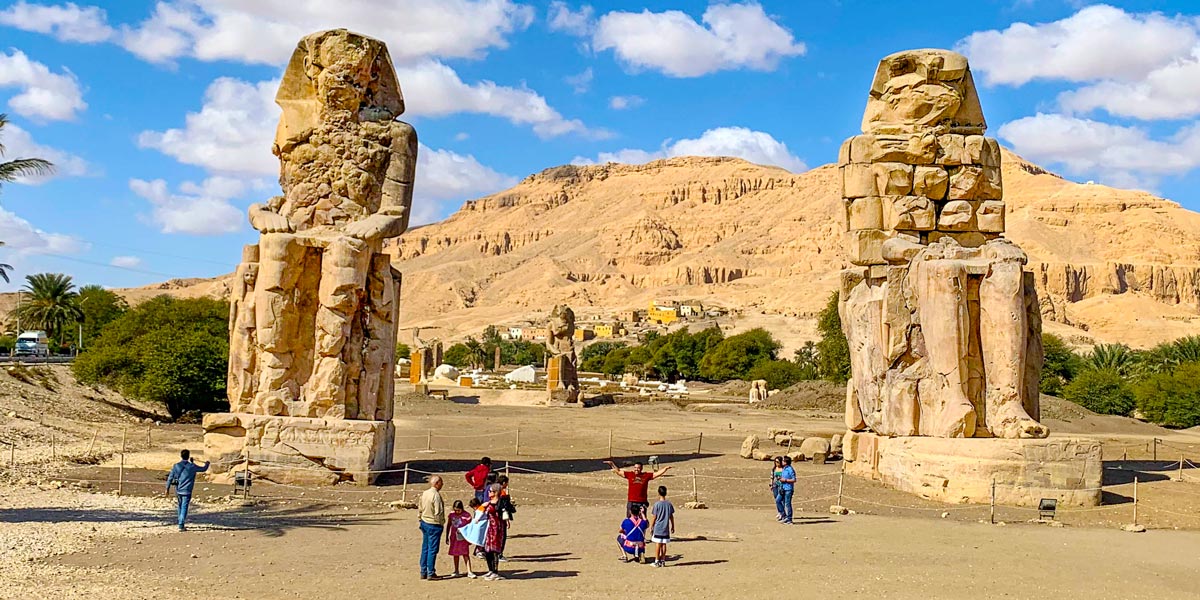
VI. The Restoration Efforts
Information on the preservation and restoration initiatives undertaken for the Colossi
The restoration and preservation of the Colossi of Memnon have been ongoing efforts to ensure the long-term survival of these ancient monuments. Over the years, several initiatives have been undertaken to protect the statues and maintain their historical significance. Here are some key highlights of the restoration efforts:
-
Conservation Measures: Various measures have been implemented to safeguard the Colossi of Memnon. These include regular cleaning to remove dirt and debris, stabilizing the statues' structural integrity, and protecting them from natural elements such as wind and rain.
-
Documentation and Research: Extensive documentation and research have been conducted to understand the history, construction techniques, and materials used to create the Colossi. This information helps experts develop appropriate conservation strategies and prevent further deterioration.
-
Restoration Projects: Restoration projects have aimed to repair damages caused by natural disasters, vandalism, and the passage of time. Skilled craftsmen and conservation specialists have worked diligently to restore the statues to their former glory, ensuring that future generations can appreciate their grandeur.
-
Monitoring and Maintenance: Continuous monitoring and maintenance are essential to detect and address any signs of deterioration or threats to the statues' integrity. Regular inspections and maintenance work help preserve the Colossi and prevent further damage.
-
Visitor Education: Educating visitors about the importance of the Colossi and promoting responsible tourism play a crucial role in their preservation. By raising awareness about these monuments' historical and cultural significance, visitors are encouraged to respect and appreciate them without causing harm.
These restoration efforts are vital in ensuring the Colossi of Memnon's longevity. By preserving these ancient statues, we can continue to marvel at their grandeur and gain insights into the rich history of ancient Egypt.
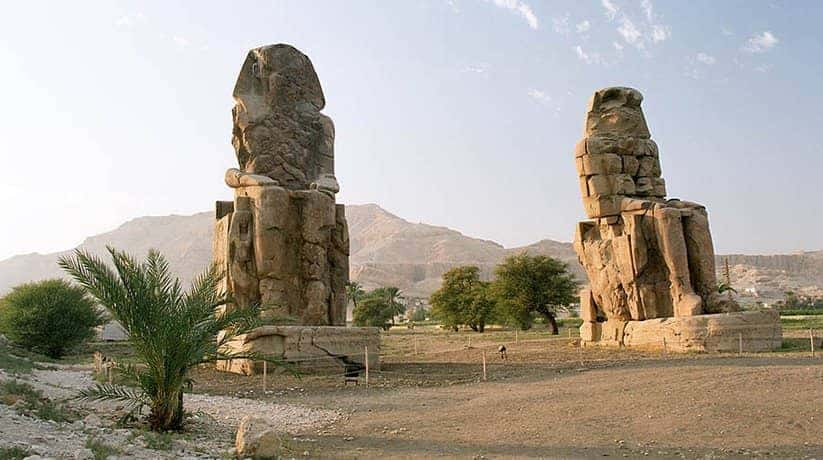
VII. The Legend of the Singing Statues
The Colossi of Memnon, also known as the Singing Statues, has been shrouded in myths and legends throughout history. According to ancient Greek and Roman travellers, these colossal statues were said to emit a mysterious sound at dawn. Here are some anecdotes and myths surrounding the supposed singing of the Colossi:
Anecdotes and myths surrounding the supposed singing of the Colossi
-
The Greek Historian Strabo:
According to the Greek historian Strabo, who visited Egypt around 20 BCE, he and his companions witnessed the singing statues during their stay in Thebes. He described the sound as resembling the strings of a lyre being plucked. -
The Roman Emperor Hadrian:
The Roman Emperor Hadrian, who ruled from 117 to 138 CE, also claimed to have heard the singing of the Colossi during his visit to Egypt. He even wrote a poem about his experience, describing the sound as the melancholic voice of Memnon greeting him. -
The Legend of Memnon: In ancient Egyptian mythology, Memnon was a hero and king of Ethiopia who fought in the Trojan War. After his death, his mother, the goddess Eos, requested Zeus to grant her son immortality. As a result, Zeus turned Memnon into a statue that sang at dawn to greet his mother.
-
The Earthquake Theory: Modern scholars propose that the statues' singing was due to the region's seismic activity. The shifting of tectonic plates could have caused the statues to emit sounds resembling musical notes or vibrations.
Despite various explanations and theories, the exact cause of the singing statues remains a mystery. The Colossi of Memnon continue to captivate visitors with their grandeur and the allure of their legendary singing.
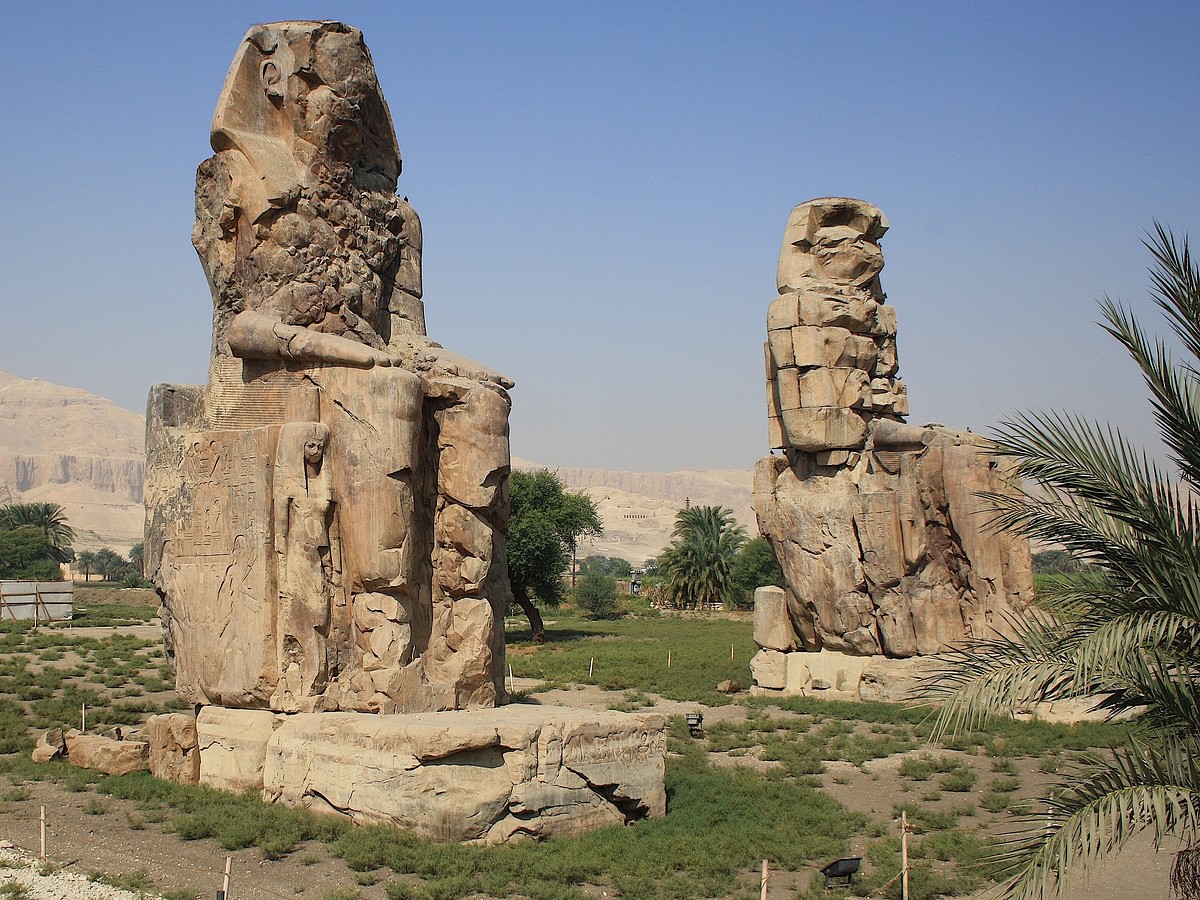
VIII. Visiting the Colossi of Memnon
For history enthusiasts and travellers looking to explore ancient sites, visiting the Colossi of Memnon is a must. These two giant statues on the west bank of the Nile River near Luxor, Egypt, are the remnants of what was once a grand mortuary temple dedicated to Pharaoh Amenhotep III. Here are some practical tips for tourists planning to visit this incredible ancient site:
1. Location and Accessibility: The Colossi of Memnon are easily accessible from Luxor, either by taxi or organized tours. The site is located approximately 8 kilometres west of Luxor's city centre.
2. Opening Hours: The site is open to visitors from sunrise to sunset. Visiting early in the morning or late in the afternoon is recommended to avoid the heat and crowds.
3. Entrance Fee: Visiting the Colossi of Memnon is an entrance fee. The fee is usually included in organized tours, but if you visit independently, check the current ticket prices.
4. Guided Tours: Hiring a local guide or joining a guided tour can enhance your visit to the Colossi of Memnon. Guides provide valuable insights into the history and significance of the statues and the surrounding archaeological sites.
5. Explore the Surroundings: While the Colossi of Memnon are the main attraction, other interesting sites are worth exploring, such as the Valley of the Kings and the Temple of Hatshepsut. Plan your visit accordingly to maximise your time in the area.
6. Respectful Attire: As the Colossi of Memnon is an ancient sacred site, it is important to dress modestly and respectfully. Avoid wearing revealing clothing, and consider covering your shoulders and knees.
7. Photography: Photography is allowed at the site, so don't forget to bring your camera or smartphone to capture the impressive statues and the surrounding landscape. However, be mindful of any restrictions or guidelines related to flash photography.
Visiting the Colossi of Memnon offers a glimpse into ancient Egyptian history and architecture. It is an awe-inspiring site that should not be missed during a trip to Luxor. To learn more about the history and significance of the Colossi of Memnon, visit their Wikipedia page.
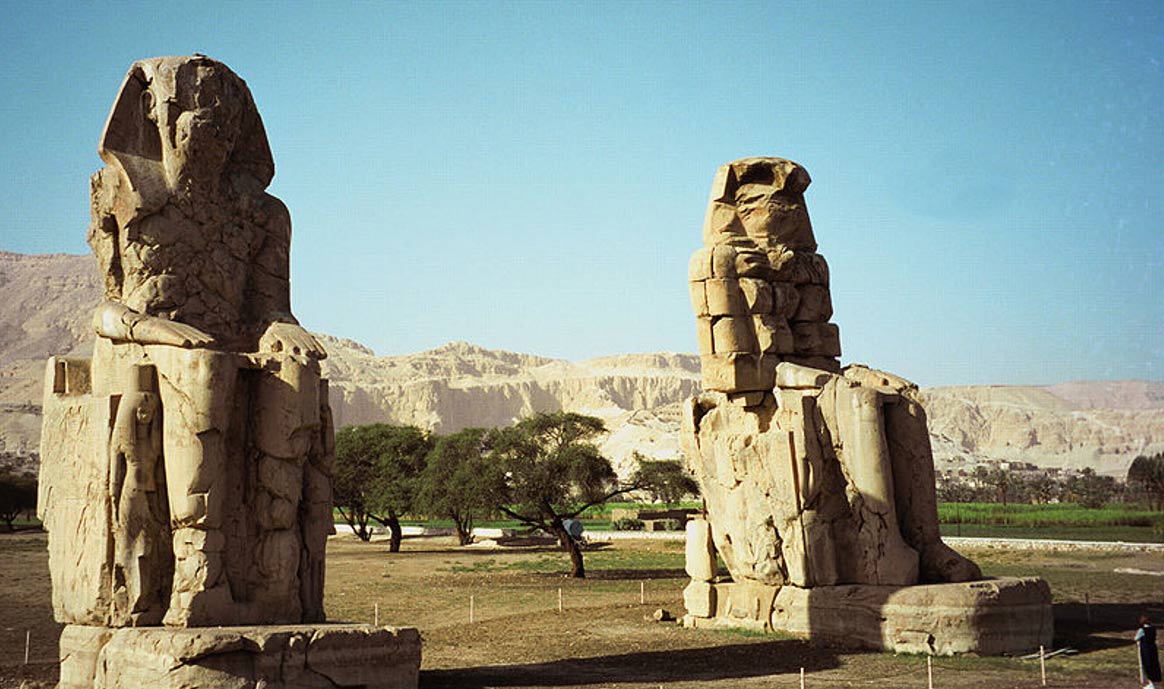
IX. Similar Ancient Statues Around the World
Comparison with other colossal statues from different civilizations
The Colossi of Memnon are not the only ancient statues that have captured the imagination of people around the world. Similar colossal statues can be found in different civilizations with unique characteristics and historical significance. Here are some notable examples:
The Statue of Liberty - This iconic statue, located in New York City, United States, stands as a symbol of freedom and democracy. The people of France gifted it to the United States and represented the Roman goddess Libertas.
The Great Sphinx of Giza - Located in Egypt, the Great Sphinx is another colossal statue that has captivated visitors for centuries. It is believed to have been built during the reign of the Pharaoh Khafre and represents a mythical creature with a lion's body and a human head.
The Leshan Giant Buddha - Found in China, this giant statue carved into the side of a cliff depicts Maitreya, a figure associated with future enlightenment in Buddhism. Standing at approximately 71 meters tall, it is the largest stone Buddha statue in the world.
The Moai of Easter Island - These massive stone statues are scattered throughout Easter Island and are believed to have been created by the Rapa Nui people. The purpose and method of their construction remain a mystery, adding to their enigmatic allure.
The Great Buddha of Kamakura - Situated in Japan, the Great Buddha of Kamakura is a bronze statue depicting Amida Buddha. It dates back to the 13th century and is a prominent symbol of Buddhist teachings and enlightenment.
Each of these colossal statues is a testament to the ingenuity and craftsmanship of ancient civilizations. They continue to inspire awe and wonder in visitors and remind them of the rich history and cultural heritage of these regions.
Here is a comprehensive list of colossal statues from around the world for further exploration.
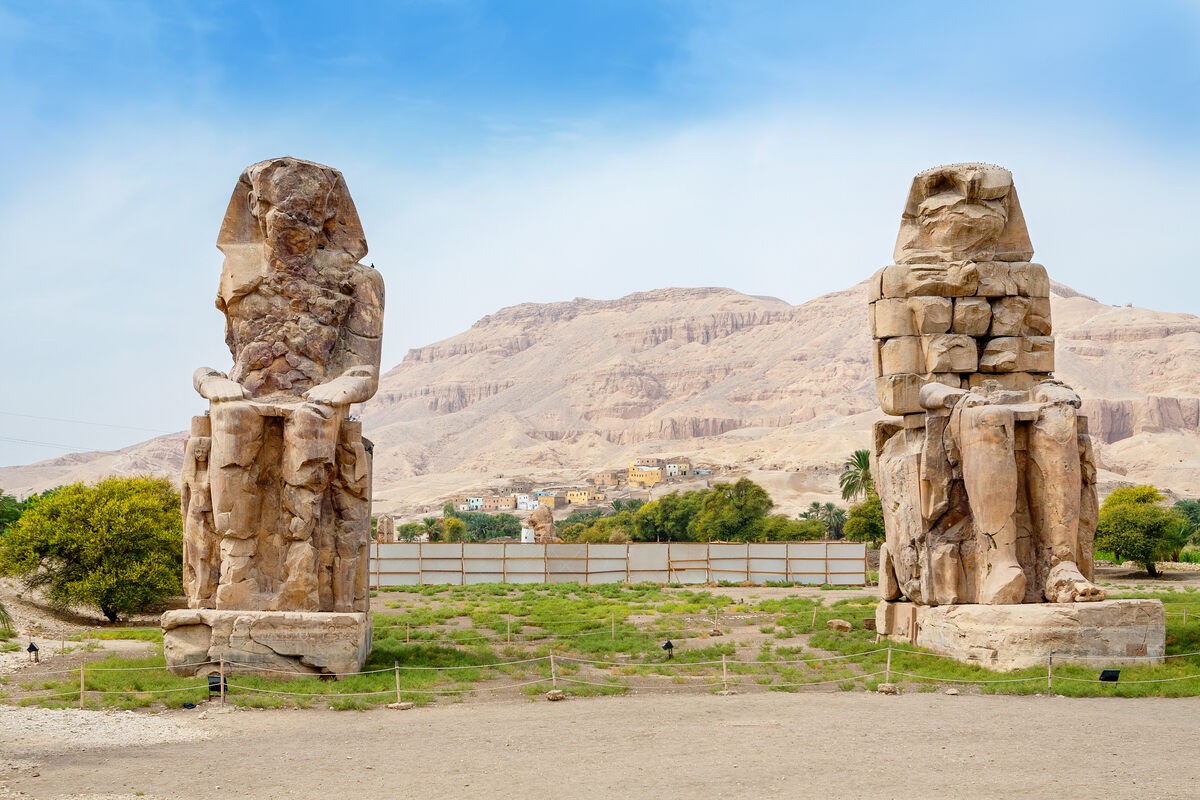
X. The Significance of the Colossi Today
Discussion on the cultural, historical, and tourism importance of the Colossi
The Colossi of Memnon, two massive statues of Pharaoh Amenhotep III, continue to captivate visitors with their historical and cultural significance. Here is a discussion of why these ancient statues hold such importance today:
-
Cultural Significance: The Colossi of Memnon are a testament to the rich cultural heritage of ancient Egypt. These statues were originally part of the funerary temple of Amenhotep III and were meant to commemorate and immortalize the pharaoh's reign. They showcase the artistic and architectural prowess of the ancient Egyptians and serve as a reminder of their advanced civilization.
-
Historical Significance: The Colossi of Memnon have survived thousands of years and provide valuable insights into the history of ancient Egypt. They offer clues about the time's religious beliefs, royal rituals, and funerary practices. By studying these statues and the surrounding structures, historians and archaeologists can better understand Amenhotep III's reign and the society he ruled over.
-
Tourism Importance: The Colossi of Memnon have become a popular tourist attraction in modern times. Visitors worldwide flock to see these impressive statues and learn about ancient Egyptian history. The site offers a unique opportunity to experience the grandeur and majesty of the past. Visitors can stand in awe of the sheer size and detail of the statues, making it a memorable experience.
If you want to learn more about the Colossi of Memnon, you can visit their Wikipedia page for further information. Whether you're a history enthusiast or simply curious about ancient civilizations, visiting the Colossi of Memnon will leave a lasting impression.
